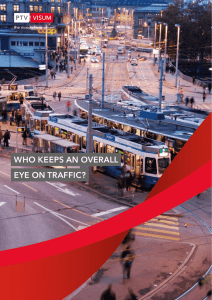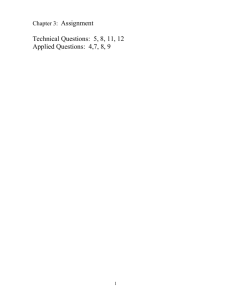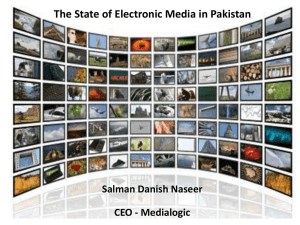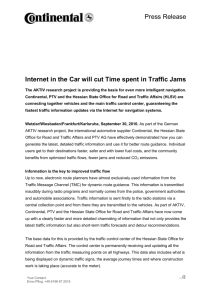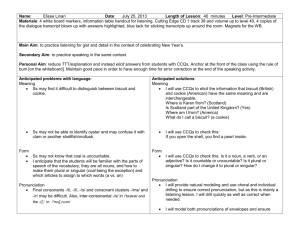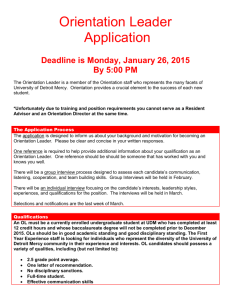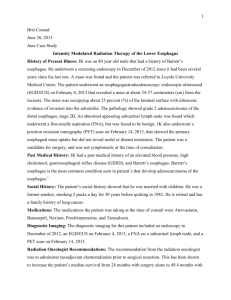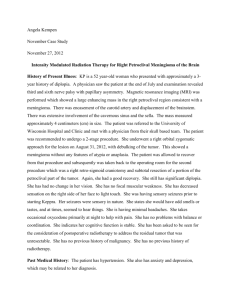PTV NEWS: PERCEPTION OF STUDENT OF HAZARA UNIVERISTY
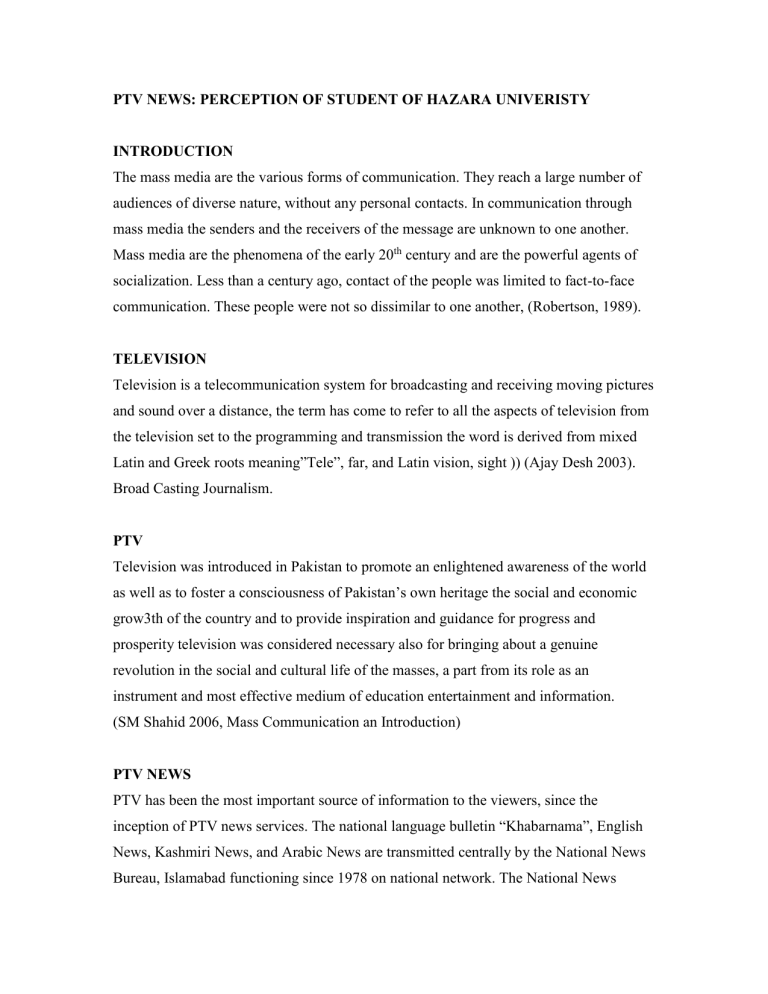
PTV NEWS: PERCEPTION OF STUDENT OF HAZARA UNIVERISTY
INTRODUCTION
The mass media are the various forms of communication. They reach a large number of audiences of diverse nature, without any personal contacts. In communication through mass media the senders and the receivers of the message are unknown to one another.
Mass media are the phenomena of the early 20 th century and are the powerful agents of socialization. Less than a century ago, contact of the people was limited to fact-to-face communication. These people were not so dissimilar to one another, (Robertson, 1989).
TELEVISION
Television is a telecommunication system for broadcasting and receiving moving pictures and sound over a distance, the term has come to refer to all the aspects of television from the television set to the programming and transmission the word is derived from mixed
Latin and Greek roots meaning”Tele”, far, and Latin vision, sight )) (Ajay Desh 2003).
Broad Casting Journalism.
PTV
Television was introduced in Pakistan to promote an enlightened awareness of the world as well as to foster a consciousness of Pakistan’s own heritage the social and economic grow3th of the country and to provide inspiration and guidance for progress and prosperity television was considered necessary also for bringing about a genuine revolution in the social and cultural life of the masses, a part from its role as an instrument and most effective medium of education entertainment and information.
(SM Shahid 2006, Mass Communication an Introduction)
PTV NEWS
PTV has been the most important source of information to the viewers, since the inception of PTV news services. The national language bulletin “Khabarnama”, English
News, Kashmiri News, and Arabic News are transmitted centrally by the National News
Bureau, Islamabad functioning since 1978 on national network. The National News
Bureau is supported by four news centers at Lahore, Peshawar, Quetta and Karachi, which also produce bulletins in the regional languages. Regional bureaus at Multan,
Faisalabad, Hyderabad, Sukkur, Muzaffarbad, and Abbotabad cover the far-flung areas fo the country. The National News Bureau can mobilize its teams to cover any national or international event at a very short notice. PTV news is also served by international news agencies, and daily satellite feeds received from VISNEWS and Asia vision, (Pakistan
Television Corporation Limited, 1990).
SIGNIFICANCE OF THE STUDY
The importance of PTV news in term of quality and information and the oterh aspects of the life is not satisfactory in present scenario it is very important to study how the PTV news getting the attention of the viewers.
STATEMENT OF THE PROBLEM
Empirical survey on how news transmitted on PTV.
OBJECTIVE OF THE STUDY
To explore the perception of the respondents regarding characteristics of the PTV news.
To explore the perception of respondents regarding the importance of PTV news.
To explore the desirable roles of PTV news in field of information.
To explore what suggestions respondents have in terms of transmition of the PTV
News.
To explore whether respondents like to watch the PTV News.
REVIEW OF LETERATURE
Mass media particularly the television and radio, on the audience members cannot be denied. Several merits and utilities are attributed to the mass media. They are the most effective tools for creating a sense of national identity, national integration, building bridges of understanding and goodwill between the people of various regions. Media play a very important role to educate, inform, and entertain the people and produce positive socio-cultural changes in the society. Through awareness communication campaigns, the media create favorable attitudes towards certain objects and tell the audiences how to use the proposed innovations. The role of the mass media in national development of a country has been a subject of considerable importance. They are considered important agents in developing the socio-economic and political conditions of a country. According to Shrum and O’Gwyn (1993), “a medium like television can be used for the construction of social reality. And this is described as ‘cultivation’.” The mass media have been used in health promotion efforts for many years. “Use of the mass media to persuade persons to engage in or avoid specific behaviors has been a subject of research for many years”,
(Donohew, 1990).
Wallack (1990) argues that “the mass media can be a powerful tool for promoting health around the world. There are, however, many complexities associated with optimal use of this powerful resource.” Some argue that social communication campaigns can be a source of providing accurate health information for individuals and that mass media can inform the public about health issues and increase awareness in the general masses. Thus, media are perceived of greater utility in the three basic domains—education, information and entertainment.
Other argue that the media are a barrier and a source of “anti-health education,” presenting people with inaccurate or misleading health information through advertising, entertainment, and even news content. In this case, the media are seen as anti-public instruments and a barrier to be overcome.
Whatever the situation may be-effective versus ineffective, pro versus anti-a technologically developed media are essential for the economic, social, cultural, and political development of the country particularly for the developing countries like
Pakistan. Actually, they are the significant tools for molding the opinion of the general masses in the desired direction for the socio-economic uplift of the country. In Pakistan, electronic media consist of Pakistan Broadcasting Corporation and Pakistan Television
Corporation Limited, (Economic Survey, 1999-2000).
HISTORY OF PTV
Television plays an important role in imparting education, information and entertainment to the people both urban and rural. It makes the general masses aware of themselves and the world around them (Akhtar, 1988). Television is the most developed medium with the audio-visual capabilities. “Its significant operation began in 1948. Since then, developments of its program and multiplication of its various uses has been rapid. Today, with its color and cross-cultural transmissions via satellites, it is regarded a very powerful addicting agent. Within a short span of time, television enjoyed a very high popularity in
Pakistan. The new comer superseded newspapers and radio, which so far enjoyed the status of prestige. Just India in September 1965. PTV played an unforgettable role in news coverage to inform the audiences and kept the nation moral high during the war”,
(Zuberi, 1992).
Pakistan Television (PTV), now in its 37 th year, covers more than 87 percent of the total population and more than 37 percent of the total area of Pakistan ( Pakistan Basic Facts
1998-99).
“Pakistan entered into television broadcasting age with a small pilot TV station established at Lahore, form where transmission was first beamed in black and white with effect from 26, November 1964”, (Pakistan Socio-Economic Profile).
Pakistan Television Corporation Limited was established in 1967. The prime objective and functions was to establish a Television Network in the country for the provision of television broadcast services by telecasting programs of all kinds,
(Economic Survery, 2000).
The UN survey rated PTV as second best in Asia in the mid 70s today; PTV supplies programs not only to networks in other developing countries but also to the developed counties. “In 1972 and 1988, PTV won a number of international awards not only in the programming categories but also for technical expertise displayed (as in the fields of engineering, for assembly of outdoor broadcast vans”, (PTV, 1990)
POLICY
The broader perspective to start electronic media in the country was to inform and educate the people through wholesome entertainment and to inculcate in them a greater awareness of their own history, heritage, current problems and development as well as knowledge of the world at large.
In fulfillment of its broad and main objectives, PTV’s telecast policy concerning various matters of national and international interests has always been motivated and guided by the cardinal principles of educating viewers about the values that are vitally important in building a united, integrated and disciplined society. These objectives have successfully been achieved through a variety of programs on religions, education, entertainment and culture.
The projection of new emerging social order is highlighted in PTV’s general programming focusing directly and indirectly on the themes like morality, civic or national responsibilities, drive against narcotics, environmental pollution, agricultural reforms in discussions, shows, and through anchorpersons in the transmission.
PTV channels are family oriented and the salient features of its policy are as follows:
PTV Corporation’s broadcasts are family oriented and they carters the need of local audience by showing eastern family programs.
It also acts on social development theory of media, that’s why it shows informative programs about health and social issues.
It also censors commercials and it holds a very high moral standard as compared to other channels.
It supports government policies on national and international matters.
PTV NEWS
Pakistan Television News informs its viewers across the country on the latest newsworthy happenings on the national and international LEVELS. During The past few years, there has been rapid expansion in the area and scope to news coverage.
Following the Pakistani private news channels, PTV news gives on-camera reporting and special news reports.
PTV news broadcasts stretch over from early morning till midnight. There are news bulletins in Urdu, English, Arabic and Kashmiri languages. All the news bulletins after 6:00 p.m. are being aired on the national networks which are also beamed through satellite to more than 38 countries.
Regional language bulletins include Punjabi from Lahore Centre, Sindhi from
Karachi Centre, Pushto and Hindko from Peshawar, and Baluchi, Pushto and
Bravi from Quetta Centre are telecasted.
To bring home maximum coverage of international evens, PTV news has made arrangements with Reuters TV, London, to satellite news items to PTV Islamabad round the clock. PTV news covers all visits abroad of VVIPs, international conferences and important other events through its own camera teams and makes possible to air them same night.
PTV News has also been involved in projecting the right of self-determination of the people of occupied Kashmir and concerning Indian propaganda war. PTV visualized several activities of Indian forces and Kashmiris in its weekly programs, tele-films and news. PTV news has its permanent news bureau at
Muzaffarabad, Azad Kashmir, to cover various events including visiting foreign journalists and foreign delegations. Like international networks, PTV news also
sent its camera team to Afghanistan to cover the fighting between different groups and plight of the common man there.
NEWS TIMING
PTV was established in 1964, at Lahore. It could only boast of one newsman a stenographer an Urdu translator and a lot of determination to give to the viewers the latest news in Urdu, Bengali and English. When it began there was not news agency tele-printer no film cameras no cameramen, no film labs. The only visuals available where the foreign news films and some locally obtained news, Photos, slowly the facilities started trickling in and now viewers could see the sprinkling of visual items form Lahore and near by suburbs. (Dr. Mehdi Hassan 2007, 9 th
Edition Journalism for All).
THE OBJECTIVE OF PTV NEWS
The objectives of PTV News the principal objectives which government had in view, in introducing television service in Pakistan were-
Instruction and enlightenment
Enrichment of Knowledge and information
Promotion of national outlook and integration Government directed those engaged in planning television service to bear constantly in mind that,
Television audience is primarily a home audience which include children and adults, persons with varied educational back ground professing different beliefs, television imposes a grave responsibility towards family life in particular and community life in general.
Care is exercised to ensure decency and decorum in News at all levels,
Profanity and obscenity in fact any manifestation in vulgarity is scrupulously avoided.
Themes, terms and phrases derogatory to any race creed class profession, personality region or province in the country are not used except when required for a specific purpose in combating an unwholesome prejudice.
Sanctity of family life reflected in marriage and in the relationship between parents and children is maintained.
News presentation is fair objective, factual and free from deception by implication or omission.
Good taste prevails in the selection and presentation of news. (Dr, Mehdi Hassan
9 th
Edition 2007, Journalism for all).
THEORATICAL FRAMEWORK
THEORY
The term theory has two broad sets of meanings, one used in the empirical sciences
(both natural and social) and the other used in philosophy, mathematics logic, and across other fields in the humanities. A theory, in the scientific sense of the word, is an analytic structure designed to explain a set of empirical observations.
USES AND GRATIFICAITON APPROACH
Uses and gratifications ejon approach is an influential tradition in media research. The original conception of the approach was based on the research for explaining the great appeal of certain media contents. The core question of such research is: Why do people use media and what do they use them for? (McQuail, 1983). There exists a basic idea in this approach: audience members know media content, and which media they can use to meet their needs.
In the mass communication process, uses and gratifications approach puts the function of linking need gratifications and media choice clearly on the side of audience members. It suggests that people’s needs influence what media they would choose, how they use certain media and what gratifications the media give them. This approach differs from other theoretical perspectives in that it regards audiences as active media users as opposed to passive receivers of information. In contrast to traditional media effects theories which focus on “what media do to people” and assume audiences are homogeneous, uses and gratifications approach is more concerned with “what people do with media” (Katz, 1959). It allows audiences personal needs to use media and responds to the media, which determined by their social and psychological background.
Uses and gratifications approach also postulates that the media compete with other information sources for audience’s need satisfaction (Katz et al., 1974a). As traditional mass media and new media continue to provide people with a wide range of media platforms and content, it is considered one of the most appropriate perspectives for
investigating why audiences choose to be exposed to different media channels (LaRose et al., 2001).
The approach emphasizes audiences’ choice by assessing their reasons for using a certain media to the disregard of others, as well as the various gratifications obtained from the media, based on individual social and psychological requirements (Severin & Tankard,
1997). As a broader perspective among communication researches, it provides a framework for understanding the processes by which media participants seek information or content selectively, commensurate with their needs and interests (Katz et al., 1974a).
Audience members then incorporate the content to fulfill their needs or to satisfy their interests (Lowery & Nabila, 1983).
CORE ASSUMPTION
According to Lundberg and Holton the uses and gratification approach (they call it a model) rests on several assumptions.
The audiences, being active, seek out specific types of media content to satisfy its needs.
People select their media fare form cafeteria fo al kinds of offering, including selecting from competing media as well as from different, more conventional and more traditional modes of need fulfillment e.g. (visiting friends, engaging in conversations, going for walks, day dreaming sleeping).
THEORATICAL STATEMENT
Youth use media for information, education, and entertainment.
Youth frequently watch PTV News.
HYPOTHESIS
Higher the attention of the viewers to PTV News, higher informative level of the
PTV News about viewers.
Higher the attention to PTV News, Higher the level of information about PTV
News.
Higher the exposure to PTV News, Higher the level of knowledge and information.
CONCEPTUALIZATION
Concept is a mental image of something. What we conceive in our mind. Concept itself is an abstract thing. In this study there are various independent and dependent variables, which are described as under;
KEY CONCEPTS
Exposure to PTV News
Watching PTV News
INDEPENDENT VARIABLE
The variable which are capable of effecting change in other variable, but these variables cannot be effected by other variables is called independent variables. In This study “TV is an independent variable”.
DEPENDENT VARIABLE
The variable whose values depend upon the other, but which cannot affected by others is called dependent variable.
In this study news and news seen are dependent variables.
EXPLICAITON OF INDEPENDENT VARIABLE
Media
TV
Electronic
Radio
Internet
EXPLICAITON OF DEPENDENT VARIABLE
TV
Information Entertainment
News
PTV News
Debates
Education
Talk Shows
METHODOLOGY
By methodology we mean the philosophy of the research process (Bailey, 1982).
RESEARCH DESIGN
A research design is basically a plan for providing answers to questions. Each research project must have a clearly stated research problems of goal that can stated in term of hypothesis. In addition each will have research design that tells how the data will be gathered and analyzed.
Mostly the research was conducted in social sciences on content analysis and survey method. This study is based on survey research method for collection of data.
SURVEY RESEARCH
Survey research is one of the most important areas of measurement in applied social research. The broad area of survey research encompasses any measurement procedures that involve asking questions of respondents. A “survey” can be anything forms a short paper-and-pencil feedback form to an intensive one-on-one in-depth interview.
We’ll begin by looking at the different types of surveys that are possible. These are roughly divided into two broad areas: Questionnaires and Interviews. Next, we’ll look at how you select the survey method that is best for your situation. Once you’ve selected the survey method, you have to construct the survey itself. Here, we will be address a number of issues including: the different types of questions; decisions about question content; decisions about question wording; decisions about response format; and, question placement and sequence in your instrument. We turn next to some of the special issues involved in administering a personal interview. Finally, we’ll consider some of the advantages and disadvantages of survey methods.
RESEARCH QUESTIONS
How frequently do you watch PTV News?
Very frequently
Frequently
Rarely
Don’t know
UNIVERSE OF THE STUDY
The some total of the unit of analysis is called population or universe. A large whole, form which a sample is drawn, is called universe.
The universe of the present study will be the total students of 20 departments of Hazara
University.
SAMPLING
A portion of elements taken from a large population from which the sample is drawn. For attached. the present study enrollment list obtained from different departments is the sample frame.
SAMPLE SIZE
Sample size for this study will 100 students of Hazara University. They will be selected on the basis of systematic random sampling method for which five students from the each department were selected.
FRAMING QUESTION
The researcher has framed questions for getting information. A closed ended questionnaire of multiple choices has been prepared for this purpose. The questionnaire is
